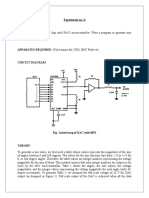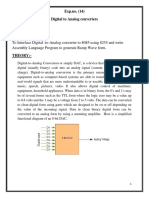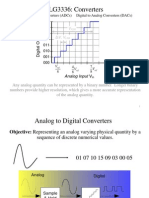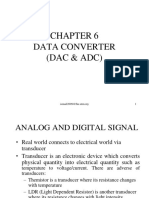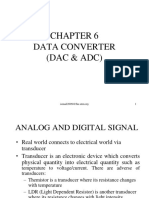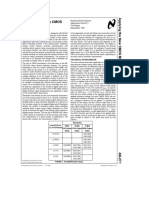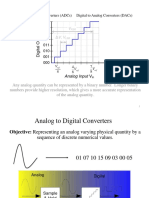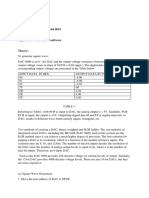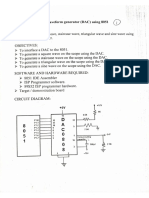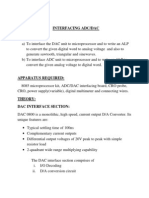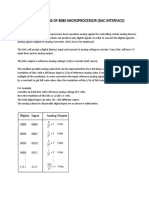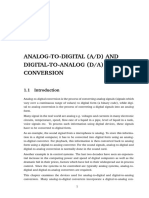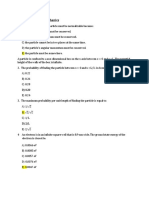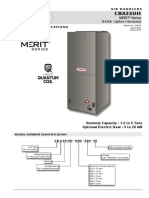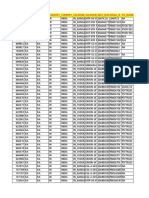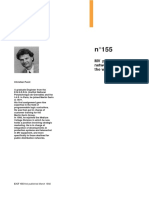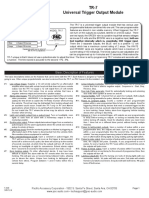0% found this document useful (0 votes)
39 views15 pagesDAC Interface
The document provides an overview of Digital-to-Analog Converters (DACs), explaining their function of converting digital inputs into analog signals and detailing the resolution and output calculations. It includes examples of an 8-bit DAC, the R-2R ladder network used in DACs, and specific implementations such as the DAC 0808. Additionally, it outlines programming examples for generating various waveforms, including square, ramp, and sine waves using the DAC.
Uploaded by
b53904537Copyright
© © All Rights Reserved
We take content rights seriously. If you suspect this is your content, claim it here.
Available Formats
Download as PDF, TXT or read online on Scribd
0% found this document useful (0 votes)
39 views15 pagesDAC Interface
The document provides an overview of Digital-to-Analog Converters (DACs), explaining their function of converting digital inputs into analog signals and detailing the resolution and output calculations. It includes examples of an 8-bit DAC, the R-2R ladder network used in DACs, and specific implementations such as the DAC 0808. Additionally, it outlines programming examples for generating various waveforms, including square, ramp, and sine waves using the DAC.
Uploaded by
b53904537Copyright
© © All Rights Reserved
We take content rights seriously. If you suspect this is your content, claim it here.
Available Formats
Download as PDF, TXT or read online on Scribd
/ 15



